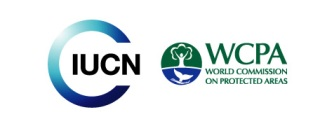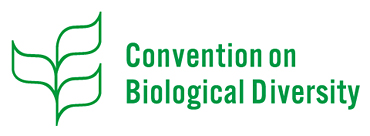Positive Impacts of Tourism
Chapter coordinator: Anna Spenceley
Chapter contributors: Anna Spenceley, Robyn Bushell, Glen Hvenegaard
Chapter 4 Table of Contents
4.1 Introduction
4.2 Economic Benefits
4.3 Social and Cultural Benefits
- 4.3.1 Benefits to Local Communities
- 4.3.2 Health Benefits
4.4 Environmental Benefits
4.5 Guidelines for Promoting Positive Impacts
- Economic Guidelines
- Social Guidelines
- Environmental Guidelines
References
- Archabald, K. and Naughton-Treves, L. (2001).‘Tourism Revenue-sharing around National Parks in Western Uganda: Early Efforts to Identify and Reward Local Communities’. Environmental Conservation. 28(2):135-149.
- Aylward, B. (2004) The actual and potential contribution of nature tourism in Zululand: Considerations for development, equity and conservation, in Aylward, B. and Lutz, E. (Eds) op. cit, pp 3-40
- Barnes, M.L. and Eagles, P. (2004).‘Examining the Relationship BetweenEcotourists and Philanthropic Behaviour’.Tourism Recreation Research 29(3):35-38.
- Beaumont, N. (2001).‘Ecotourism and the Conservation Ethic: Recruiting the Uninitiated or Preaching to the Converted’.Journal of Sustainable Tourism 9(4):317-341.
- Biggs, D., Turpie, J., Fabricius, C. andSpenceley, A. (2011).‘The Value of Avitourism for Conservation and Job Creation – An Analysis from South Africa’.Conservation and Society 9(1):80-90.
- Blom, A. (2000).‘The Monetary Impact of Tourism on Protected Area Management and the Local Economy in Dzanga-Sangha (Central African Republic)’Journal of Sustainable Tourism 8(3):175-189.
- Boggs, L. (2000). Community power, participation, conflict and development choice: community wildlife conservation in the Okavango region of northern Botswana. Evaluating Eden Series, Discussion Paper No. 17, International Institute for Environment and Development, London. Online Resource
- Boggs, L. (2004). Community-based natural resource management in the Okavango Delta. In Fabricius, C. & Koch, E. (Eds.) with Magome, H. and Turner, S. (2004). Rights, Resources and Rural Development: Community-Based Natural Resource Management in Southern Africa (pp 147-159). Earthscan, UK.
- Bottema, M.J.M. and Bush, S.R. (2012). The durability of private sector-led marine conservation: A case study of two entrepreneurial marine protected areas in Indonesia. Ocean & Coastal Management 61: 38-48.
- Buckley, R. (2010). Conservation Tourism. Wallingford, UK:CABI Publishing.
- Burns, G.L. (2004). The host community and wildlife tourism. pp. 125-144. In: Higginbottom, ed. Wildlife Tourism: Impacts, Management, and Planning, Common Ground: Altona, Victoria, Australia.
- Bush, G., Hanley, N. and Colombo, S. (2008) Measuring the demand for nature-based tourism in Africa: A choice experiment using the ‘cut-off’ approach. Discussion paper 2008-6, Stirling Economics, University of Stirling, Stirling, UK. Cited in Nielsen, H. and Spenceley, A. (2011) op. cit.
- Bushell, R. and McCool, S.F. (2007). ‘Tourism as a Tool for Conservation and Support of Protected Areas: Setting the Agenda’ In: R. Bushell and P.F.J. Eagles (eds.) Tourism and Protected Areas: Benefits Beyond Boundaries, pp. 12-26. Oxon, UK: CABI.
- Bushell, R. and Powis, B. (2009). Healthy Tourism Report, ASEAN Secretariat on Emerging Infectious Diseases. Jakarta, Indonesia.
- Clark, P.A. (2000). The ethics of alternative medicine theories. J Public Health Policy.21(4): 447 – 470.
- Curtin, S. (2010). ‘Managing the Wildlife Tourism Experience: The Importance of Tour Leaders’. International Journal of Tourism Research 12:219-236.
- Dabrowski, P. (1994). ‘Tourism for Conservation, Conservation for Tourism’.Unasylva 45(1):42-44.
- de Vries, S., Verheij, R.A., Groenewegen, P & Spreeuwenberg, P. (2003). Natural enviroments – healthy environments. An exploratory analysis of the relationship between greenspace and health. Environment and Planning, 35: 1717 -1731.
- DFID (UK Department for International Development). (1998). Changing the nature of tourism. DFID, London. UK.
- Djoh, E. and van der Wal, M. (2001). ‘Gorilla-based Tourism: A Realistic Source of Community Income in Cameroon? Case Study of the Villages of Koungoulou and Karagoua’.Rural Development Forestry Network 25e:31-37.
- Drumm, A. (2007). Tourism-based revenue generation for conservation. In Bushell, R. and Eagles, P. F. J. (eds) Tourism and protected areas: Benefits beyond boundaries, pp. 191-209. IUCN and CAB International, Wallingford UK, and Cambridge USA.
- Eagles, P. F. J., McCool, S. F., and Haynes, C. D. (2002). Sustainable Tourism in Protected Areas: Guidelines for Planning and management, Best Practice Protected Area Guidelines Series No. 8, IUCN Gland, Switzerland and Cambridge UK. Online Resource
- Eagles, P. F. J. (2014) Fiscal Implications of moving to tourism finance for parks: Ontario Provincial Parks. Managing Leisure, 19(1), 1-17.
- Fawcett, K. (2009). Personal communication. Director, Karisoke Research Centre, September 16, cited in Nielsen, H. and Spenceley, A. (2011) op. cit.
- Gossling, S. (2000). Sustainable tourism development in developing countries: Some aspects of energy use. Journal of Sustainable Tourism 8: 410-425.
- Gould, K.A. (1999). ‘Tactical Tourism: A Comparative Analysis of Rainforest Development in Ecuador and Belize’. Organization & Environment 12(3): 245-262.
- Greer, D. and Cipolletta, C. (2006). ‘Western Gorilla Tourism: Lessons Learned from Dzanga-Sangha’. Gorilla Journal 33:16-19.
- Harcourt, A.H. (1986). ‘Gorilla Conservation: Anatomy of a Campaign’. In: K. Benirschke (eds.) Primates: The Road to Self-sustaining Populations, pp. 31-46.New York: Springer-Verlag.
- Harris, R. (2002). ‘The Tale of the Little penguins and the Tourists - Making Tourism Sustainable in Phillip Island Nature Park’. In: T. Harris, T. Griffin and P. Williams (eds.) Sustainable Tourism: A Global Perspective. pp. 238-251. Amsterdam, Netherlands: Elsevier Butterworth-Heinemann.
- Higginbottom, K., Tribe, A. and Booth, R. (2003). ‘Contributions of Non-consumptive Wildlife Tourism to Conservation’. in R. Buckley, C. Pickering and D.B. Weaver (eds.)Nature-based Tourism, Environment and Land Management, eds., pp. 181-195.Oxon, UK: CABI.
- Hill, G.H., Cable, T.T. and Scott, D. (2010). ‘Wildlife-based Recreation as Economic Windfall: A Rhetorical Analysis of Public Discourse on Birding’. Applied Environmental Education and Communication 9:224-232.
- Hong, L., and Mingchong, G. (2013). Study on eco-tourism on the background of low-carbon environmental protection. Advanced Materials Research. 807-809: 1002-1005.
- HPHP. (2013). Healthy Parks Healthy People Central. Online Resource
- Hvenegaard, G.T. (2011). ‘Potential Conservation Benefits of Wildlife Festivals’.Event Management. 15(4):373-386.
- Hvenegaard, G.T. and Dearden, P. (1998). ‘Linking Ecotourism and Biodiversity Conservation: A Case Study of DoiInthanon National Park, Thailand’. Singapore Journal of Tropical Geography 19(2):193-211.
- Hvenegaard, G.T. and Tiitmamer Kur, N. (2010). ‘Enhancing Conservation Benefits from Wildlife Festivals and Ecotourism Activities’. Blue Jay 68(4):208-217.
- International Ecotourism Society (2013). Can tourism help promote sustainable water management in destinations? Retrieved February 3 from https://www.ecotourism.org/news/can-tourism-help-promote-sustainable-water-management-destinations.
- James, B. M. and Goodman, P. S. (2001). Ecological study, Report to the World Bank Research Project on nature Tourism and Conservation, Cascades, KwaZulu Natal: Brousse-James & Associates and KZN Wildlife. Cited in Aylward, B. (2004). op cit.
- Lang, T. and Heasman, M. (2004). Food Wars. London: Earthscan.
- Lepp A. (2002). ‘Uganda’s Bwindi Impenetrable National Park: Meeting the Challenges of Conservation and Community Development through Sustainable Tourism’. In: R. Harris, T. Griffin, and P. Williams (eds.) Sustainable Tourism: A Global Perspective. pp.211-220. Amsterdam, Netherlands: #Elsevier Butterworth-Heinemann.
- Lindberg, K. (1998). ‘Economic Aspects of Ecotourism’. In: K. Lindberg and M.E. Wood (eds.) Ecotourism: A Guide for Planners and Managers. Volume 2.pp.87-117. North Bennington, VT: The Ecotourism Society.
- Maller, C., Townsend,M., St Leger, L. Hendersen-Wilson,C., Pryor, A., Prosser, L. and Moore, M. (2009). Healthy Parks, Healthy People: the health benefits of contact with nature in a park context. The George Wright Forum. 26(2): 51 – 83.
- Mathieson, A., & Wall, G. (1982). Tourism: Economic, Physical and Social Impacts. London: Longman.
- Mbaiwa, J.E. (2005). The problems and prospects of sustainable tourism development in the Okavango Delta, Botswana. Journal of Sustainable Tourism, 13(3), 203-227.
- McNeely, J.A,.Thorsell, J.W., and Ceballos-Lascurain, H. (1991). Guidelines for Development of Terrestrial and Marine National Parks and Protected Areas for Tourism. Gland, Switzerland: International Union for Conservation of Nature and Natural Resources.
- McNeilage, A. (1996). ‘Ecotourism and mountain gorillas in the Virunga Volcanoes’. In: V.J. Taylor and N.Dunstone(eds.). The Exploitation of Mammal Populations. pp. 334-344. London, UK: Chapman & Hall.
- Mitchell, J. and Ashley, C. (2010). Tourism and poverty reduction: pathways to prosperity. Earthscan publications, UK.
- Moore, A.W. (1991). Planning for ecotourism in protected areas. In: J.A. Kusler (ed.) Ecotourism and Research Conservation (pp. 563-574). Merida, Mexico and Miami Beach, FL: International Symposia on Ecotourism and Resource Conservation.
- Munn, C.A. (1992). ‘Macaw Biology and Ecotourism, or “when a bird in the bush is worth two in the hand” In: S.R. Beissinger& N.F.R. Snyder (eds.). In: New World Parrots in Crisis: Solutions from Conservation Biology. pp. 47-72. Washington, DC: Smithsonian Institution Press,
- National Parks Service. (2013). National Parks and Public Health: Healthy Parks Healthy People Science Plan. US Dept of Interior: Washington DC. Online Resource
- Natural England. (2012). Health and natural environments –an evidence based information pack. Online Resource
- Nielsen, H. and Spenceley, A. (2011). The success of tourism in Rwanda: Gorillas and more, Chunhjan-Pole, P., Angwafo, M. (eds.) Yes Africa Can: Success Stories from a Dynamic Continent, The World Bank: pp 231-249.
- Pegas, F.D.V. and Stronza, A. (2008). ‘Ecotourism Equations: Do Economic Benefits Equal Conservation?’ In: A. Stronza& W.H. Durham (eds.). Ecotourism and Conservation in the Americas, eds. pp. 163-176, Oxon, UK: CABI.
- Plumptre, A. J., Kayitare, A., Ranier, H., Gray, M., Munanura, I., Barakabuye, N., Asuma, S., Sivha, M., and Namara, A., (2004). The socio-economic status of people living near protected areas in the Central Albertine Rift. Albertine Rift Technical Reports 4. Wildlife Conservation #Society, New York. Cited in Nielsen, H. and Spenceley, A. (2011) op. cit.
- Potwarka, L.R., Kaczynski, A.T. and Flack, A.L. (2008). Places to Play: associations of park space and facilities with healthy weight status among children. J Community Health.33: 344 – 350.
- Powell, R., Kellert, S. and Ham, S. (2009). ‘Interactional Theory and the Sustainable Nature-based Tourism Experience’. Society and Natural Resources 22(8):761-776.
- Powell, R.B. and Ham, S.H. (2008). ‘Can Ecotourism Interpretation Really Lead to Pro-Conservation Knowledge, Attitudes and Behaviour? Evidence from the Galapagos Islands’.Journal of Sustainable Tourism. 16(4):467-489.
- Pretty, J. (2004). How nature contributes to mental and physical health. Spirituality & Health International 5(2): 68 – 78.
- Pretty, J; Griffin, M; Peacock, J; Hine, R; Sellens, M, & South, N. (2005). A Countryside for Health and Wellbeing: the Physical and Mental Health benefits of ‘Green’ Exercise. Countryside Recreation Network, Sheffield Hallam University. http://www.countrysiderecreation.org.uk/pdf/CRN%20exec%20summary.pdf
- Pretty, J; Griffin, M; Peacock, J; Hine, R; Sellens, M, &Griffin, M. (2007). Green Exercise in the UK Countryside: effects on health and psychological wellbeing and the implications for policy and planning. J. Environmental Planning and Management, 50(2): 211-231.
- Rattan, J.K., Eagles, P.F.J., and Mair, H.L. (2012). Volunteer tourism: its role in creating conservation awareness. Journal of Ecotourism 11(1): 1-15.
- Rodrigues, A. (2012). Concessions contract management and monitoring in Niassa Reserve, Mozambique. In: Spenceley, A., Casimirio, R., and Barborak, J. Concessioning tourism opportunities in conservation areas and maximizing rural development: Lessons and the way forward for Mozambique and other Southern African countries, Girasol Indy Village, Maputo, Mozambique, 19-22 March 2012, Minutes of meeting, Report to the USAID SPEED program.
- Sandbrook, C. and Adams, W.H. (2012). Accessing the impenetrable: the nature and distribution of tourism benefits at a Ugandan National Park. Society & Natural Resources 25(9): 915-932.
- Scherl, L. M. and Edwards, S. (2007). Tourism, indigenous and local communities and protected areas in developing nations, In Bushell, R. and Eagles, P. F. J. (eds.) Tourism and protected areas: Benefits beyond boundaries. pp71-88. IUCN and CAB International, Wallingford UK, and Cambridge USA.
- School of Health and Social Development (SHSD). (2008). Healthy Parks, Healthy People: The health benefits of contact with nature in a park context. Deakin University. http://www.healthyparkshealthypeoplecongress.org/images/stories/documents/hphp.pdf
- SANParks. (2012). South African National Parks Annual Report, 2011-2012. pp29-30. Online Resource
- Sewell, W.R.D., Dearden, P. and Dumbrell, J. (1989).‘Wilderness Decision Making and the Role of Environmental Interest Groups: A Comparison of the Franklin Dam, Tasmania and South Moresby, British Columbia’. Natural Resources Journal 29(1): 147-169.
- Sindiyo, D.M. and Pertet, F.N. (1984). ‘Tourism and its Impact on Wildlife Conservation in Kenya’. UNEP Industry and Environment 7(1):14-19.
- Sparkes, C. & Woods, C. (2009) Linking People to Landscape: the benefit of sustainable travel in countryside recreation and tourism. East of England Development Agency.
- Steven, R., Castley, J.G., & Buckley, R. (2013). Tourism revenue as a conservation tool for threatened birds in protected areas. PLOS One 8(5): e62598: 1-7.
- Stronza, A. (2007). ‘The Economic Promise of Ecotourism of Conservation’.Journal of Ecotourism 6(3): 210-230.
- Snyman, S. (2012a). The role of ecotourism employment in poverty reduction and community perceptions of conservation and tourism in southern Africa. Journal of Sustainable Tourism, 20(3), 395-416.
- Snyman, S. (2012b). Ecotourism joint ventures between the private sector and communities: An updated analysis of the Torra Conservancy and Damaraland Camp partnership, Namibia, Tourism Management Perspectives, 4, 127-135.
- Snyman, S. (2013). High-end ecotourism and rural communities in southern Africa: A socio-economic analysis. Unpublished PhD dissertation, School of Economics, University of Cape Town.
- Spenceley, A. (ed). (2008). Responsible Tourism: Critical issues for conservation and development. Earthscan, IUCN, UK.
- Taylor, A.F., Kuo, F.E. & Sullivan, W.C. (2001). Coping with ADD: the surprising connection to green play settings. Environment and Behaviour. 33: 54-77.
- Telfer, D.J. & Sharpley, R. (2008). Tourism and development in the developing world. Routledge.
- Thompson, A. (2008). Concessions in Namibia’s protected areas, Presentation to the African Safari Lodges Program, The Grace Hotel, Rosebank, South Africa, 19-21 May 2008. Accessible from www.asl-foundation.org/news.php?id=241&catid
- Thompson, A., Massyn, P. J., Pendry, J., & Pastorelli, J. (2014). Tourism concessions in protected natural areas: Guidelines for managers. New York: United Nations Development Programme. Online Resource
- Thresher, P. (1981). ‘The Economics of a Lion’. Unasylva. 33(134):34-35.
- Turpie, J.K., Heydenrych, B.J., & Lamberth, S.J. 2003. Economic value of terrestrial and marine biodiversity in the Cape Floristic Region: Implications for defining effective and social optimal conservation strategies. Biological Conservation 112: 233-251.
- Uwingeli, P. (2009). Personal communication, Chief Park Warden, Volcanoes National Park, November 3, cited in Nielsen, H. and Spenceley, A. (2011) op. cit.
- Van Sickel, K., and Eagles, P. F. J. (1998) Budgets, pricing policies and user fees in Canadian parks’ tourism, Tourism management, 19 (3), 225-235
- Weaver, D.B. (2001). Ecotourism. John Wiley & Sons, Milton, Qld, Australia.
- Weaver, D.B. (2013). ‘Protected Area Visitor Willingness to Participate in Site Enhancement Activities’. Journal of Travel Research 52(3):377-391.
- Weber, W. (1987). Ruhengeri and its Resources: An Environmental Profile of the Ruhengeri Prefecture, Rwanda.Kigali, Rwanda:Ruhengeri Resource Analysis and Management Project.
- Western, D. and Henry, W. (1979). ‘Economics and Conservation in Third World National Parks’. BioScience 29(7):414-418.
- Wilderness Holdings. (2013). Wilderness Integrated Annual Report 2013. Retrieved on 13th June 2014 from -- http://www.wilderness-group.com/system/assets/142/original/Wilderness%20IR%202013%20-%20Web.pdf?1375184197 Online Resource
- World Health Organisation. (2001). World Health Report. Geneva:WHO.
- Zeppel, H. and Muloin, S. (2008). ‘Conservation Benefits of Interpretation on Marine Wildlife Tours’. Human Dimensions of Wildlife. 13(4):280-294.




